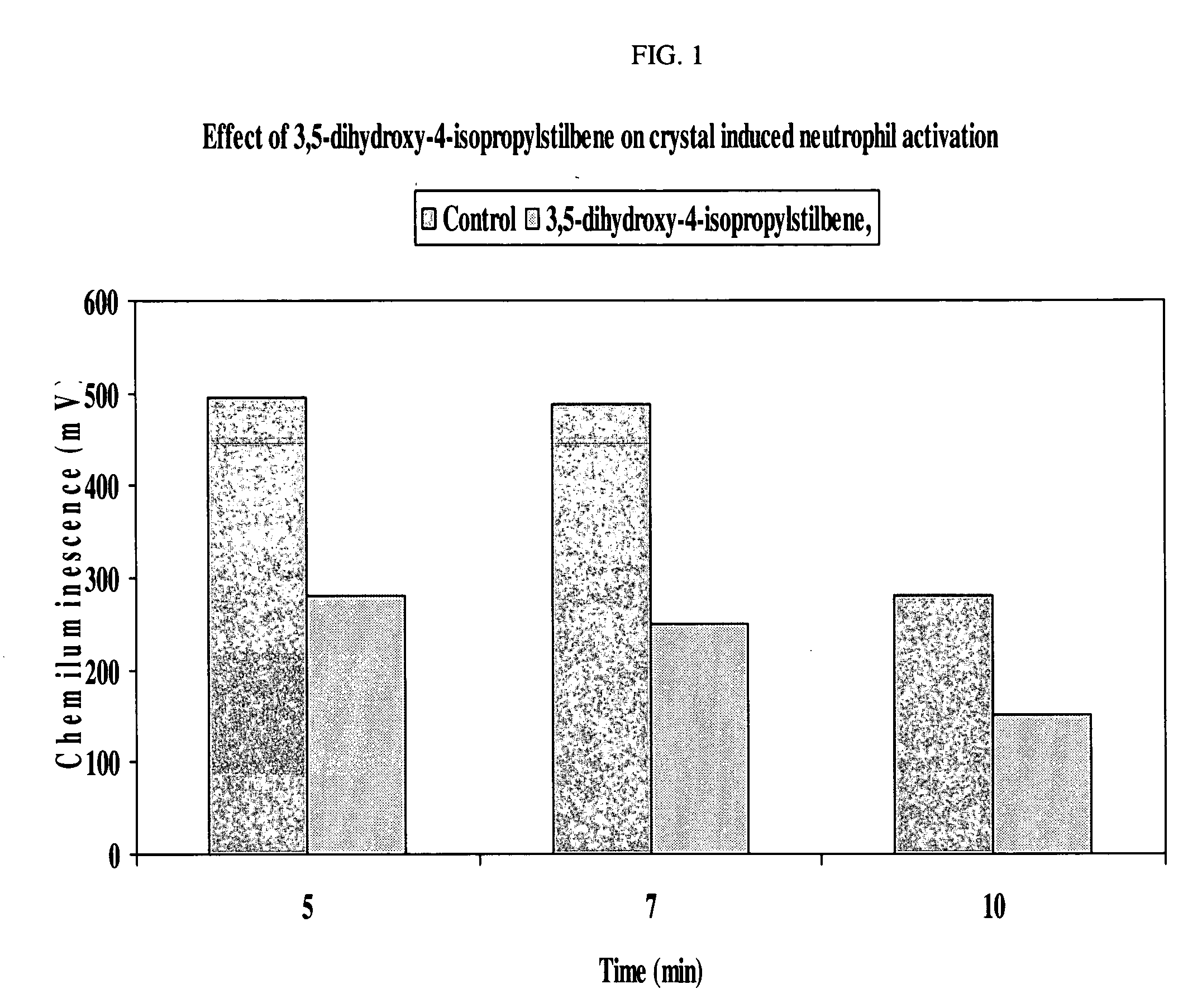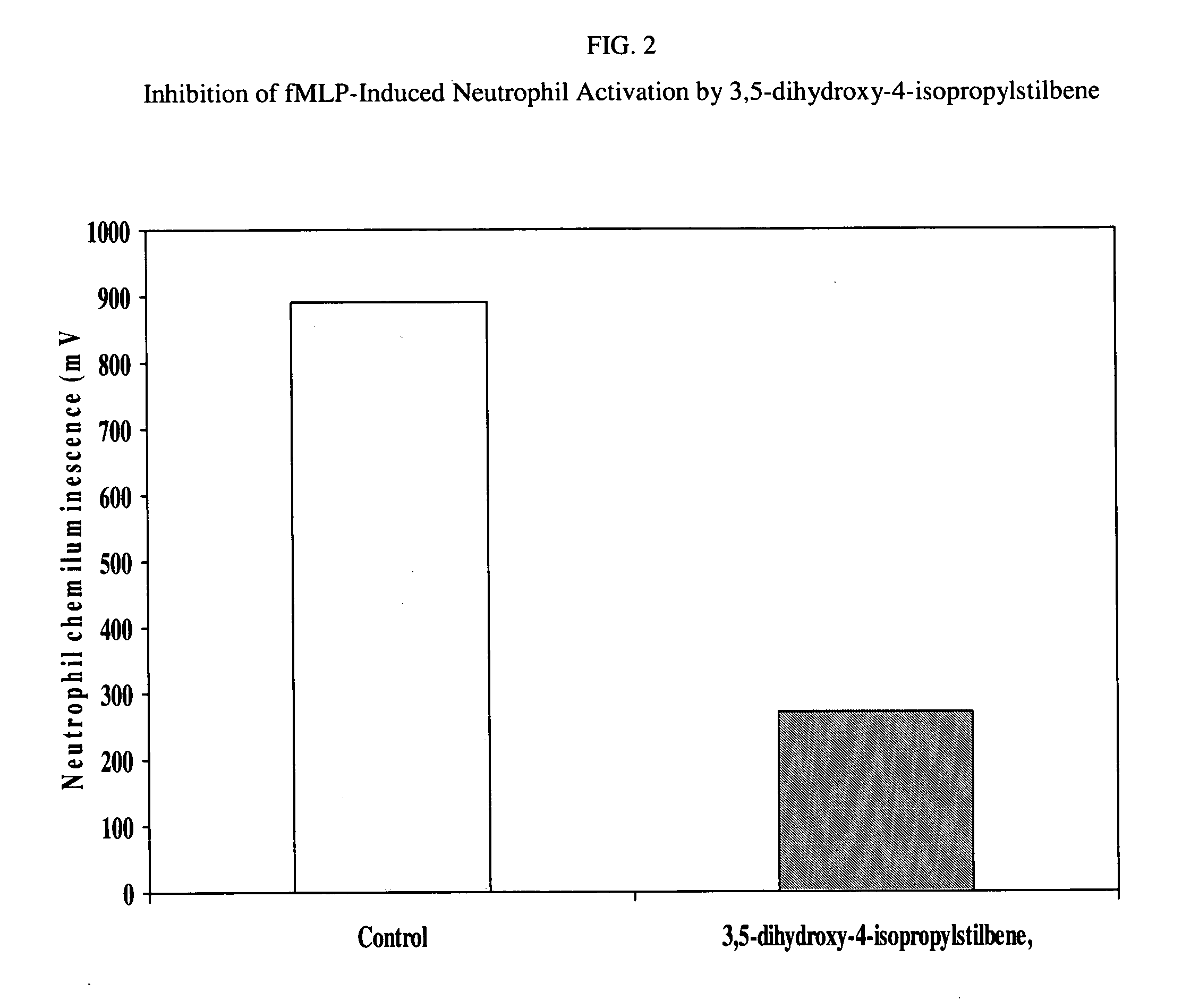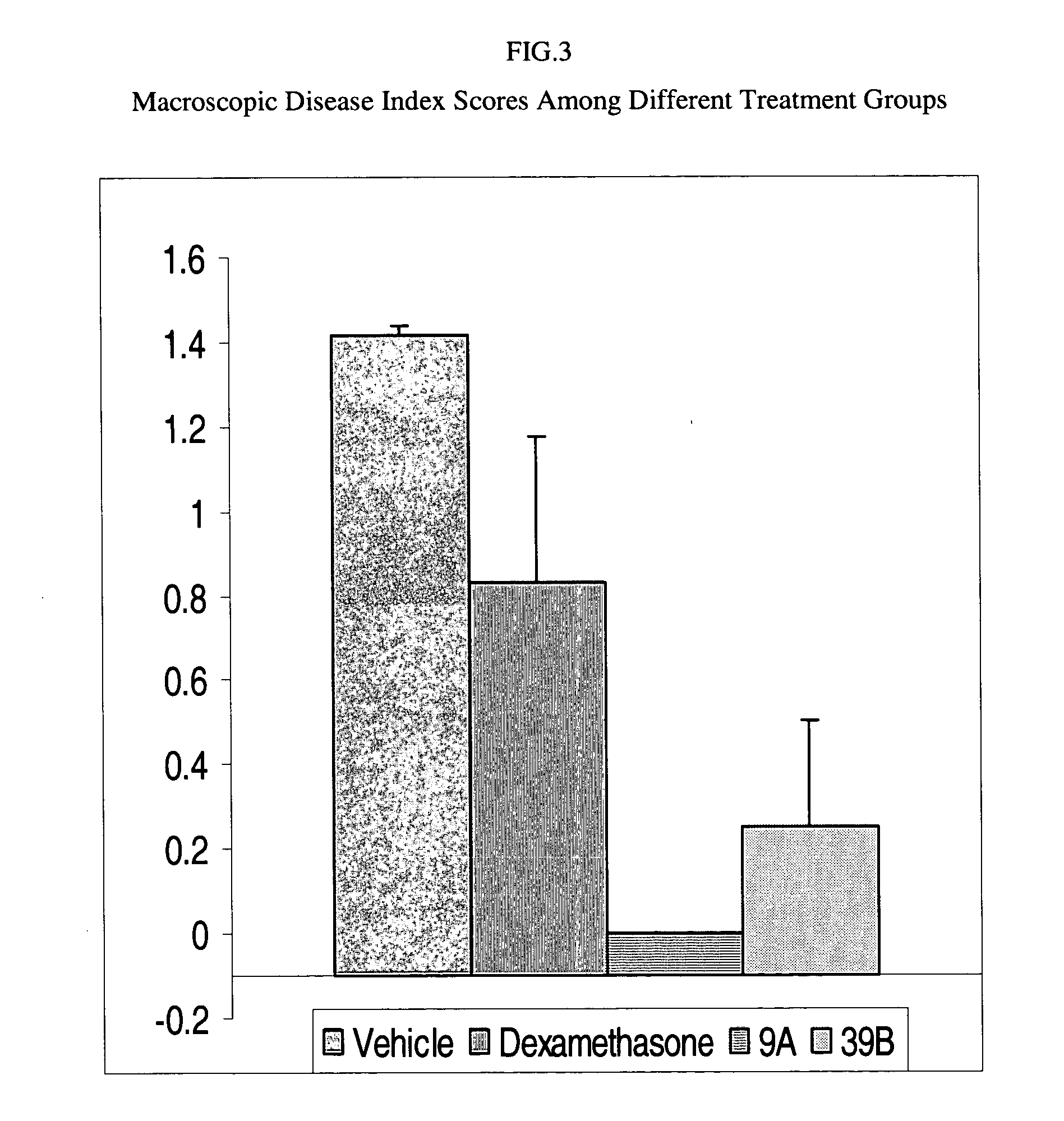Anti-inflammatory and psoriasis treatment and protein kinase inhibition by hydroxy stilbenes and novel stilbene derivatives and analogues
a technology of hydroxy stilbene and hydroxy hydroxy stilbene, which is applied in the direction of biocide, plant growth regulator, non-active ingredient pharmaceuticals, etc., can solve the problems of inflammatory diseases, weak antinematodal and moderate antifungal properties, and compound activity that has not been shown to have biological activity
- Summary
- Abstract
- Description
- Claims
- Application Information
AI Technical Summary
Benefits of technology
Problems solved by technology
Method used
Image
Examples
example 1
Synthesis of Selected Inventive Compounds
Compounds of the present invention may be prepared from 3,4-dihydroxybenzoic acid and 4-bromo-3,4-dihydroxybenzoic acid. Synthesis process includes the hydroxylmethylation, ester reduction, alcohol oxidation, witting reaction (or Homer reaction or Horner-Emmons-Wadsworth reaction) and demethylation. The synthetic routes are well established and available in the art.
Additional stilbene derivatives may be obtained by standard esterification through the reaction of hydroxylated stilbene derivative and an acid or its derivative such as the corresponding salt, chloride and anhydride. This reaction is well known in the art. For example, an alcohol was added to a mixture of anhydride and pyridine at low temperature, and the mixture was left at room temperature for sufficient time to complete the reaction. After the reaction, general work up process that is known to the art gave the corresponding derivatives.
Compounds of Formula II may be produ...
example 2
Synthesis of Additional Inventive Compounds
experiment 1.4
Experiment 1. 4-[2-(3,5-Dimethoxy-4-1-propylphenyl)ethenyl]benzoic acid (1B).
(a) 3,5-Dimethoxy-4-1-propylbenzyl alcohol.
To a suspension of LiAlH4 (95%) (5.00 g, 125 mmol) in dry ether (100 mL) at 0° C. was added a solution of methyl 3,5-dimethoxy-4-1-propylbenzoate (15.7 g, 90.1 mmol), in ether (300 mL) under N2. The suspension was stirred at 0° C. for one hour then for an additional hour at room temperature. The reaction was quenched by slow addition of a saturated Na2SO4 aqueous solution (10 mL) at 0° C. The mixture was stirred overnight. The solid was filtered off and the filtrate was evaporated to dryness to give the desired alcohol (13.8 g, 88% yield) as white crystals. 1HNMR (CDCl3. ppm): δ 1.34 (d, J=7.2 Hz, 6H), 3.65 (hept., J=7.2 Hz, 1H), 3.88 (s, 6H), 4.70 (s, 2H), 6.62 (s, 2H).
(b) 3,5-Dimethoxy-4-1-propylbenzyl aldehyde.
A mixture of 3,5-dimethoxy-4-1-propylbenzyl alcohol (13.05 g, 62.1 mmol) and pyridinium chlorochromate (33.92 g, 157 mmol) was stirred in CH2Cl2 (100...
PUM
| Property | Measurement | Unit |
|---|---|---|
| body weight | aaaaa | aaaaa |
| temperature | aaaaa | aaaaa |
| temperature | aaaaa | aaaaa |
Abstract
Description
Claims
Application Information
 Login to View More
Login to View More - R&D
- Intellectual Property
- Life Sciences
- Materials
- Tech Scout
- Unparalleled Data Quality
- Higher Quality Content
- 60% Fewer Hallucinations
Browse by: Latest US Patents, China's latest patents, Technical Efficacy Thesaurus, Application Domain, Technology Topic, Popular Technical Reports.
© 2025 PatSnap. All rights reserved.Legal|Privacy policy|Modern Slavery Act Transparency Statement|Sitemap|About US| Contact US: help@patsnap.com



